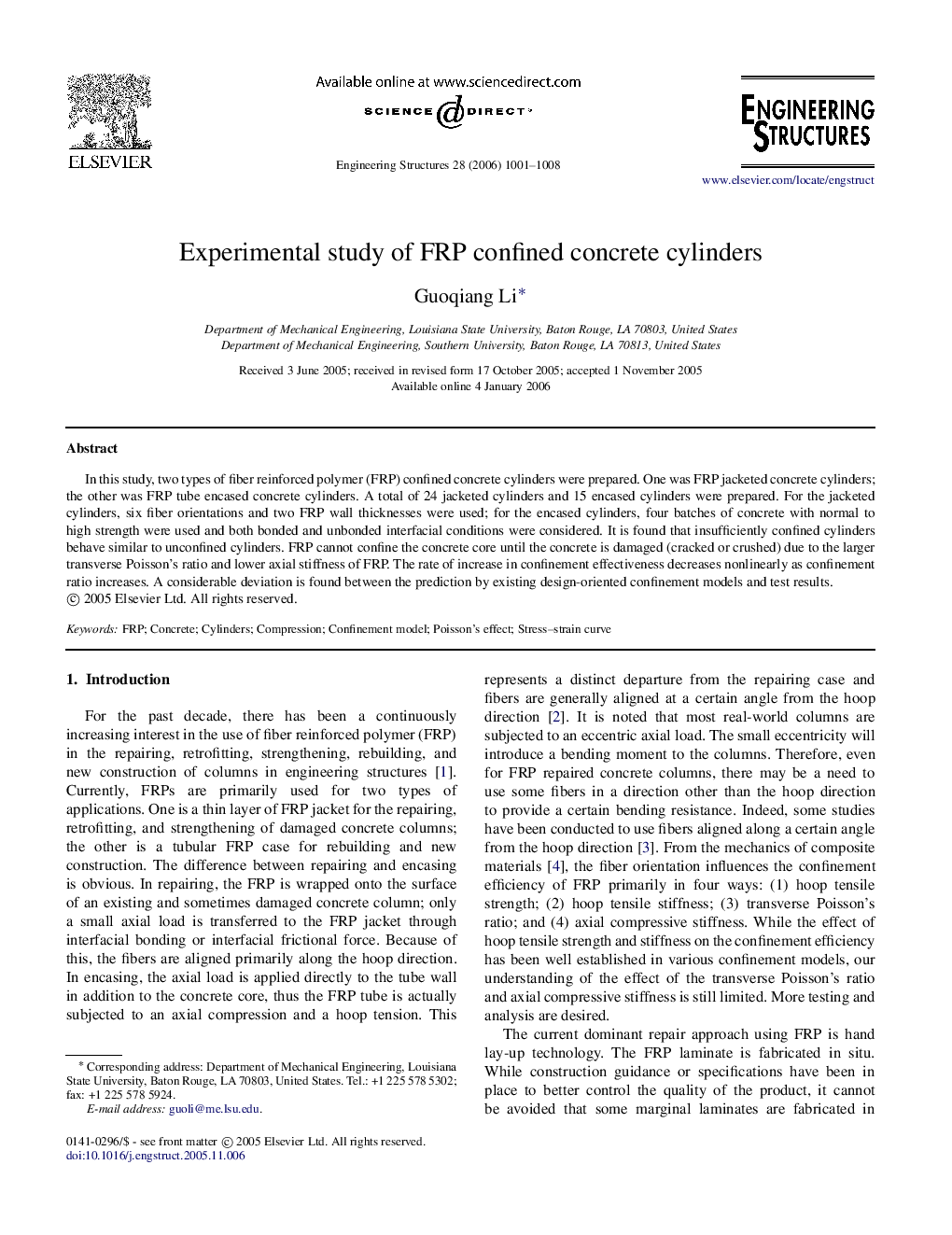| Article ID | Journal | Published Year | Pages | File Type |
|---|---|---|---|---|
| 269428 | Engineering Structures | 2006 | 8 Pages |
In this study, two types of fiber reinforced polymer (FRP) confined concrete cylinders were prepared. One was FRP jacketed concrete cylinders; the other was FRP tube encased concrete cylinders. A total of 24 jacketed cylinders and 15 encased cylinders were prepared. For the jacketed cylinders, six fiber orientations and two FRP wall thicknesses were used; for the encased cylinders, four batches of concrete with normal to high strength were used and both bonded and unbonded interfacial conditions were considered. It is found that insufficiently confined cylinders behave similar to unconfined cylinders. FRP cannot confine the concrete core until the concrete is damaged (cracked or crushed) due to the larger transverse Poisson’s ratio and lower axial stiffness of FRP. The rate of increase in confinement effectiveness decreases nonlinearly as confinement ratio increases. A considerable deviation is found between the prediction by existing design-oriented confinement models and test results.
